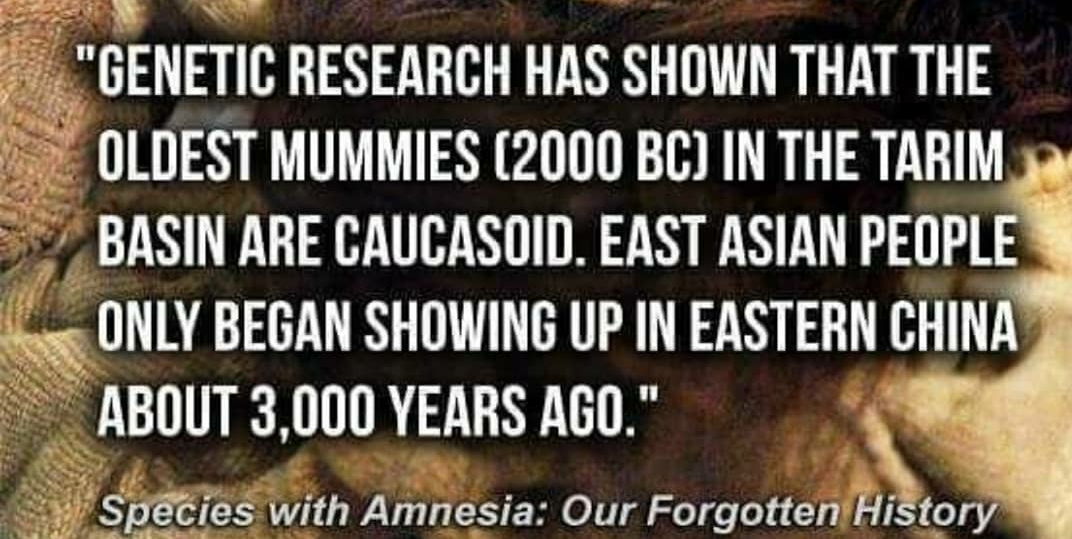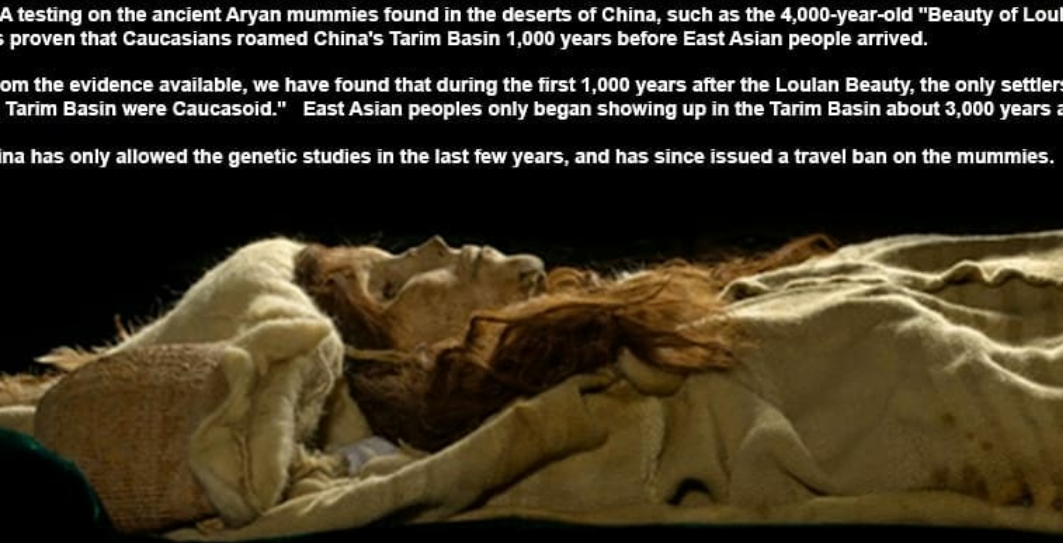CAUCASIANS OF ASIA THE CHINESE WANT BURIED FOREVER

... tall people with red or blond hair and light eyes, had long been the subject of ancient Chinese legend. Then, in the early 20th century, archeologists digging in the Tarim Basin in western China, unearthed mummies.
Chinese archeologists working in the Taklamakan Desert, made further discoveries that forced them to reconsider - hundreds more Caucasian mummies, many of them tattooed with geometric designs.
They were clothed in garments resembling Celtic plaid, complete with tam-o'-shanters and Robin Hood caps. Perhaps the ancient Chinese legends of how their civilizations were originally started were accurate.
Radiocarbon dating established the mummies as living over 4,000 years ago during the height of the Bronze Age, in the 21st century BC. Italian geneticist, Paolo Francalacci, tested the DNA of a few of the mummies and found two of them to be related to modern-day Swedes, Finns, Tuscans, Corsicans, and Sardinians.
Struck by the similarities between Ötzi the Iceman and these Caucasoid mummies, Sinologist, Victor Mair, remarked, "These guys out in the Tarim (Basin) are just like him - one's in ice and the others are in sand."
These were Indo-European people, ancient Aryans, cousins of the Celts and Scythians, a branch of the family that controlled the Silk Road to Europe from 2500 BC to 400 BC. They influenced cultures as far as Japan, spreading their Caucasoid tattoo culture to the ancestors of Japan's indigenous Ainu.
If enterprising Caucasians might have once inhabited Xinjiang province, it was a theory that the Chinese government wanted 'classified'. The version of history they guarded was of a Chinese civilization blossoming in isolation, without any Western influence. - Atlantean Gardens - ancient-tattooed-aryan-mummies-of-asia


